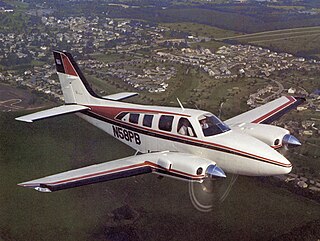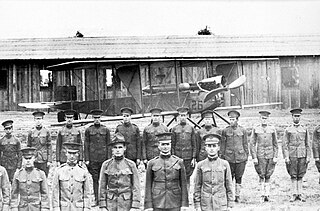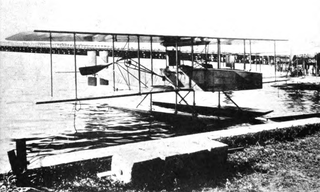
The ERCO Ercoupe is an American low-wing monoplane aircraft that was first flown in 1937. It was originally manufactured by the Engineering and Research Corporation (ERCO) shortly before World War II; several other manufacturers continued its production after the war. The final model, the Mooney M-10, first flew in 1968 and the last model year was 1970. It was designed to be the safest fixed-wing aircraft that aerospace engineering could provide at the time, and the type continues to enjoy a faithful following.

The Beechcraft Baron is a light twin-engined piston aircraft designed and produced by Beechcraft. The aircraft was introduced in 1961. A low-wing monoplane developed from the Travel Air, it remains in production.

The Lockheed Model 14 Super Electra was an American civil passenger and cargo aircraft built by the Lockheed Aircraft Corporation during the late 1930s. An outgrowth of the earlier Model 10 Electra, the Model 14 was also developed into larger, more capable civil and military versions.
The 1911 Curtiss Model D was an early United States pusher aircraft with the engine and propeller behind the pilot's seat. It was among the first aircraft in the world to be built in any quantity, during an era of trial-and-error development and equally important parallel technical development in internal combustion engine technologies.

The Wright Model A was an early aircraft produced by the Wright Brothers in the United States beginning in 1906. It was a development of their Flyer III airplane of 1905. The Wrights built about seven Model As in their bicycle shop during the period 1906–1907, in which they did no flying. One of these was shipped to Le Havre in 1907 in order to demonstrate it to the French. The Model A had a 35-horsepower (26 kW) engine and seating for two with a new control arrangement. Otherwise, it was identical to the 1905 airplane. The Model A was the first aircraft that they offered for sale, and the first aircraft design to enter serial production anywhere in the world. Apart from the seven machines the Wrights built themselves in 1906–1907, they sold licences for production in Europe with the largest number of Model A's actually being produced in Germany by Flugmaschine Wright GmbH, which built about 60 examples.

The Aeronautical Division, Signal Corps (1907–1914) was the first heavier-than-air military aviation organization in history and the progenitor of the United States Air Force. A component of the U.S. Army Signal Corps, the Aeronautical Division procured the first powered military aircraft in 1909, created schools to train its aviators, and initiated a rating system for pilot qualifications. It organized and deployed the first permanent American aviation unit, the 1st Aero Squadron, in 1913. The Aeronautical Division trained 51 officers and 2 enlisted men as pilots, and incurred 13 fatalities in air crashes. During this period, the Aeronautical Division had 29 factory-built aircraft in its inventory, built a 30th from spare parts, and leased a civilian airplane for a short period in 1911.

The Burgess Model H was an early United States airplane and one of the first air machines specifically designed and built for military use.

The Burgess Company was a U.S. airplane manufacturer between 1910 and 1918.

The Curtiss Model N was a military trainer used primarily by the United States Navy during World War I.

The Wright Model B was an early pusher biplane designed by the Wright brothers in the United States in 1910. It was the first of their designs to be built in quantity. Unlike the Model A, it featured a true elevator carried at the tail rather than at the front. It was the last Wright model to have an open-frame tail. The Model B was a dedicated two-seater with the pilot and a passenger sitting side by side on the leading edge of the lower wing.

The Burgess Model I, also known as the Burgess I-Scout and the Coast Defense Hydroaeroplane, was a United States reconnaissance seaplane built for the Aeronautical Division, U.S. Signal Corps in 1913. It was of conventional Wright Model B design but with an engine mounted amidships in an enclosed fuselage, driving by chains two large pusher propellers mounted on the interplane struts. The undercarriage consisted of twin pontoons. The single example built, S.C. No. 17, was delivered to the Army in January 1913 at the Burgess Company and Curtis factory in Massachusetts, then transported to Florida to complete the training of two officers. After the assignment, it was disassembled and moved to the Philippines in September 1913, where it was in and out of service several times before crashing into the sea near Corregidor on January 12, 1915. It is notable as the first U.S. Army aircraft to conduct two-way radio communication with the ground in December 1914.

The Loening PW-2 was a 1920s American single-seat monoplane fighter designed by Grover Loening and built by his Loening Aeronautical Engineering Company.

The Loening S-1 Flying Yacht, also called the Loening Model 23, was an early light monoplane flying boat designed in the United States by Grover Loening in the early 1920s. The aircraft won the 1921 Collier Trophy.

The Lockheed XC-35 is a twin-engine, experimental pressurized airplane. It was the second American aircraft to feature cabin pressurization. It was initially described as a "supercharged cabins" by the Army. The XC-35 was a development of the Lockheed Model 10 Electra that was designed to meet a 1935 request by the United States Army Air Corps for an aircraft with a pressurized cabin.

The Cody V was a single-engined biplane built by the British-based American aviation pioneer Samuel Franklin Cody in 1912. It was built from the remains of two of Cody's earlier aircraft, and won the 1912 British Military Aeroplane Competition, with two aircraft being purchased for the Royal Flying Corps. It was abandoned after the mid air disintegration of one of the aircraft in April 1913.

The Dunne D.8 of 1912 was a tailless swept wing biplane, designed by J. W. Dunne to have inherent stability. One example was supplied to RAE Farnborough. License-built Burgess-Dunne models were used by the US Signal Corps and United States Navy and the short-lived Canadian Aviation Corps. It was the latter's first and only warplane.

The Wright Model D was built to sell to the United States Army for an observation aircraft. It was similar in design to the Wright Model R with a 6-60 motor. The Model D could fly 66.9 mph and climb 525 feet per minute, but its excessive landing speed discouraged the Army from ordering more.

The Curtiss Model J was a prototype tractor configuration aircraft that became the basis for the Curtiss Jenny series of aircraft.
The Grinnell Aeroplane Company was an American aircraft manufacturer based in Grinnell, Iowa, that built aircraft prior to World War I.

The Romanian Air Corps or Aviation Corps (RAC) was the air arm of the Romanian army until the formation of the Romanian Air Force. It was established on 1 April 1913 as the Military Aeronautics Service and subordinated to the Engineer Inspectorate, being organized in two branches – the aviation and the balloon branch. On 23 August 1915, the RAC was formed as an independent military arm and operated until 1 January 1924 when it became an equal to the Army and Navy, being redesignated as the Royal Romanian Air Force.


















